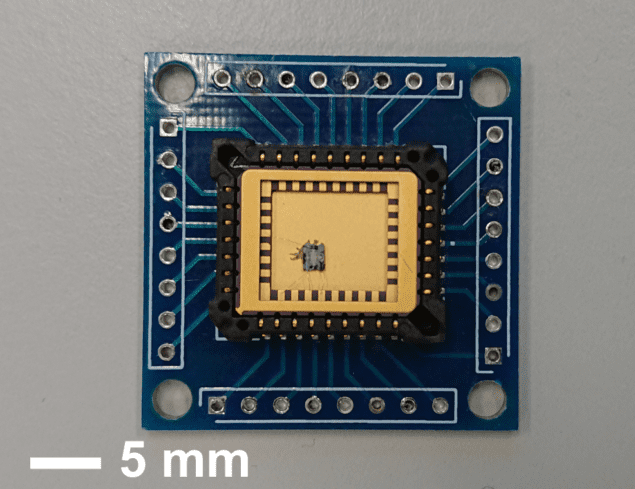
Drinking as little as 6 ml of methanol can be fatal. Since the start of the year, there have been 1636 reported cases of methanol poisoning across a number of countries. The problem arises in adulterated counterfeit or informally produced spirit drinks (according to the World Health Organisation) which can lead to inadvertent methanol consumption. Break outs of methanol poisoning are particularly common in developing countries partly because current methods to detect methanol are resource intensive making them inaccessible. Researchers Jan van den Broek and colleagues at ETH Zurich and the University Hospital Zurich in Switzerland have now developed a handheld gas analyser that is able to successfully discriminate between methanol, ethanol and acetone. Additionally, they showed the device is capable of differentiating between low concentrations of methanol (1 ppm) and high concentrations (up to 62000 ppm) of ethanol within 2 minutes, essential for the analysis of alcoholic beverages.
Developing the sensor for methanol
The device comprises a column of polymer resin to separate methanol from interference compounds such as ethanol prior to reaching the detector. The column works like a gas chromatographic system, separating the components based on differences in their volatility. The researchers then incorporate a highly sensitive but non-specific microsensor composed of palladium-doped tin oxide nanoparticles on interdigitated sensing electrodes – a measurable change in conductivity in the semiconductor indicates the presence of methanol, ethanol or acetone in the different parts of the column.
The researchers then investigated the efficacy of the device for differentiating between un-tainted liquor from contaminated beverages. They laced Arrack (a Southeast Asian liquor) with varying concentrations of methanol (0.3-1% vol/vol). There was a peak in the conductance at 1.7 minutes for the more volatile methanol, which the device extracts first, with a peak for ethanol following after at approximately 8.3 minutes. The device could not only clearly differentiate between the tainted Arrack and the unadulterated liquor at all concentrations tested, but was also capable of quantifying the amount of methanol present. This provides the first step to implementing low-cost methanol analysis of alcoholic beverages, particularly in developing countries.

Breath test detects opioids
Additionally, the researchers investigated the potential to detect methanol in breath samples. An ethanol intoxicated volunteer with a blood alcohol content of 0.54‰ provided a breath sample, which was subsequently spiked with a concentration of methanol slightly above that of serious methanol intoxication (135ppm). When analysed, the device could clearly differentiate between methanol and ethanol in breath samples. They confirmed the results from the device by analysing the same breath samples by bench top proton-transfer-reaction time-of-flight mass spectrometry (PTR-TOF-MS).
The future of this device
The authors hope this “proof-of-concept” device will lead to the development of a fast and non-invasive method for detecting methanol poisoning. Additionally, it could pave the way towards an inexpensive means of monitoring alcoholic beverage production to prevent instances of accidental poisonings in the future. Full details of this research are reported in Nature Communications.



